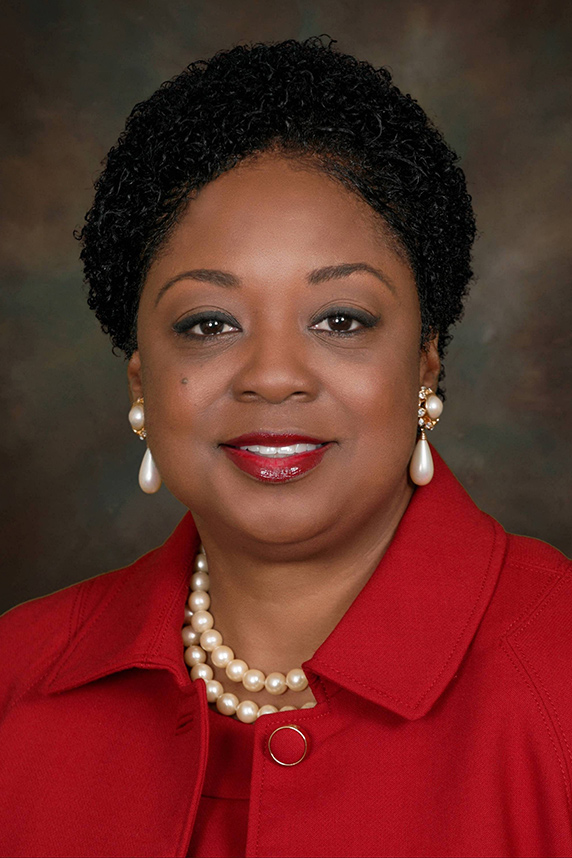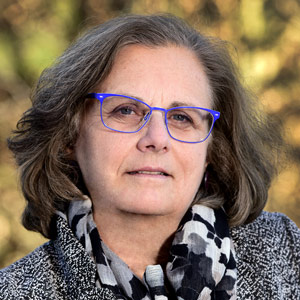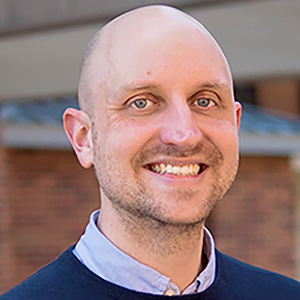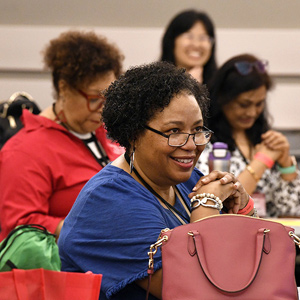Racism is a fundamental cause of adverse health outcomes for people of color, according to scholars, clinicians, and public health experts at the seventh annual Women's Health Awareness Conference on April 17. Feedback in previous years informed the choice of this year’s theme, Racism and Health: Changing the Narrative, Reaching for Equity.
 The NIEHS Women’s Health Awareness program celebrated seven years of an event that serves women and families of the institute’s local community, North Carolina counties, and beyond. (Image courtesy of NIEHS)
The NIEHS Women’s Health Awareness program celebrated seven years of an event that serves women and families of the institute’s local community, North Carolina counties, and beyond. (Image courtesy of NIEHS)The Centers for Disease Control and Prevention recently declared racism a serious public health threat. Research has shown Blacks in the U.S. are more prone to disease and death than whites. The COVID-19 pandemic has hit communities of color particularly hard, with Blacks dying at twice the rate of whites.
 “Facing these challenges head on allows us to address, create, and implement important health interventions and policy changes that can lead to the elimination of environmental health disparities from our communities of color,” said Packenham. (Photo courtesy of Jerry Head, Jr.)
“Facing these challenges head on allows us to address, create, and implement important health interventions and policy changes that can lead to the elimination of environmental health disparities from our communities of color,” said Packenham. (Photo courtesy of Jerry Head, Jr.)“If we failed to deliberately talk about racism and health during this time of public health dialogue about COVID-19 and race relations in this country, we would not have served our community well,” said lead NIEHS organizer Joan Packenham, Ph.D., director of the NIEHS Office of Human Research Compliance. NIEHS sponsored the event with Delta Sigma Theta Sorority, Inc., and North Carolina Central University.
Dispelling myths
Keynote speaker Harriet Washington — a medical ethicist, author, and environmental justice advocate — dispelled several myths.
Myth 1: Socioeconomic status (SES) defines environmental burden — race, rather than SES, defines the burden of pollution on Blacks. One study found that neighborhoods of Blacks earning $50,000 to $60,000 were on average more polluted than those with whites earning below $10,000. Causes included redlining, white flight, and disproportionate placing of toxic sites.
Myth 2: Blacks are inherently less intelligent than whites — “Environmental toxicity greatly erodes intelligence and affects behavior, in concert with many other factors,” said Washington. Such factors include economic marginalization and substandard housing, among others. Certain exposures, which she termed toxic brain thieves, can cause loss of IQ points. Examples include air pollution, lead and other heavy metals, endocrine disruptors, and scarcity of healthy food.
She also cited the example of adding iodine to salt, for thyroid health. Researchers unexpectedly saw a 25-point jump in IQ of military recruits between WWI and WWII. “This showed us very dramatically the power of the environment to determine intelligence, and we need to act on that,” she said. Washington provided practical tips and encouraged participants to take responsibility and advocate for themselves and their communities.
Participating in trusted clinical studies is another way to provide factual and accurate data on minorities and the environmental effects on their health.
Be your own advocate
Retired surgeon Lisa Nelson, M.D., linked lack of access to health care, particularly in rural communities, with higher rates of death from heart disease, cancer, and COVID-19 for people of color.
“You can feel under siege and overwhelmed, thinking that the water, land, or air is poisoned, and wondering what you as one person could possibly do,” she said. “You need to understand that you are your best health care provider.”
Nelson suggested strategies to safeguard health.
- Filtering water.
- Eating a healthy diet.
- Seeking a health care provider who understands holistic approaches.
- Self-advocating in your job and living situation.
- Being mindful in managing stress.
 In addition to lectures on racism, the conference featured mindfulness sessions to help participants cope with stress. (Photo courtesy of fizkes / Shutterstock.com)
In addition to lectures on racism, the conference featured mindfulness sessions to help participants cope with stress. (Photo courtesy of fizkes / Shutterstock.com)
Mind-body connection
Licensed psychologist, Ashly Gaskin-Wasson, Ph.D., discussed interpersonal and systemic racism linked to cultural insensitivity and poor quality care. This can lead to racial trauma, manifesting itself as severe mental illness, chronic disease, and emotional suppression that causes cumulative stress.
Health psychologist Cheryl Woods-Giscombe, Ph.D., from the University of North Carolina at Chapel Hill (UNC), said research has shown psychological stress to be one of the major social determinants of health.
Racial trauma and Black women’s responsibility for taking care of their families leads to pressure to be strong, or what she called the Superwoman schema. “Some of the traits are assets, but we need to learn how to manage them with practices like mindfulness and stress reduction, so those assets don’t become a liability.”
Citations:
Downey L, Hawkins B. 2008. Race, income, and environmental inequality in the United States. Sociol Perspect 51(4):759–781.
Feyrer J, Politi D, Weil DN. 2017. The cognitive effects of micronutrient deficiency: evidence from salt iodization in the United States. J Eur Econ Assoc 15(2):355–387.
Woods-Giscombe CL. 2010. Superwoman schema: African American women’s views on stress, strength, and health. Qual Health Res 20(5):668–683.
(Marla Broadfoot, Ph.D., is a contract writer for the NIEHS Office of Communications and Public Liaison.)









